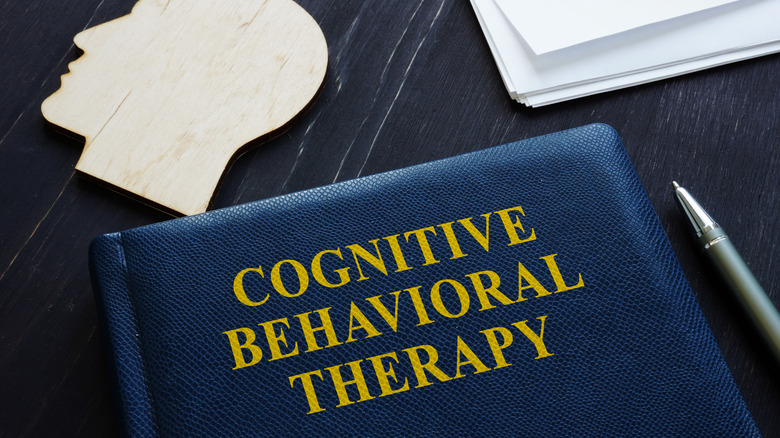What Is Cognitive Behavioral Therapy?
As a form of psychotherapy, cognitive behavioral therapy (CBT) utilizes goal-oriented methods to help a patient recognize what is currently causing them distress in their lives and how to better cope with the circumstances (via Cleveland Clinic). As per the American Psychological Association (APA), cognitive behavioral therapy focuses on identifying unhelpful thinking patterns and learned behaviors. It is a widely-used treatment method for various mental health conditions such as anxiety, depression, substance use disorders, eating disorders, and more. Cleveland Clinic adds that it can also be effective for individuals with post-traumatic stress disorder (PTSD) and obsessive-compulsive disorder (OCD), as well as those experiencing relationship difficulties, grief, or challenges in the workplace.
There are a couple of key factors that set CBT apart from other forms of talk therapy. One is that treatment time is generally shorter, usually spanning between five and 20 sessions, reports Cleveland Clinic. Second, rather than focusing on processing the past, CBT centers on the here and now. At the start of treatment, you'll share with your therapist what kinds of difficulties you've been facing, any related symptoms you've experienced, and any additional worries you may have. This will help your therapist get a more well-rounded idea of what you've been dealing with in order to help develop treatment goals.
Cognitive behavioral therapy techniques
Your therapist may also ask a number of follow-up questions. Together, they will help you recognize patterns of beliefs, emotions, or behaviors that may be playing a role in your emotional distress. You will then work together on developing skills to change those unhelpful thought patterns, habits, and behaviors. These learned techniques can then be used in everyday life.
Experts at Psychology Today explain that one such CBT technique involves challenging a negative thought by asking ourselves questions to help reframe it. Such questions include, "What's the evidence for and against this idea?" or "Is it possible that another perspective is more accurate?" This technique may be especially helpful when challenging different cognitive distortions such as all-or-nothing thinking, overgeneralizing, should-ing, or negative filtering, explains Cognitive Behavioral Therapy Los Angeles. As reported via Healthline, other CBT techniques that may be implemented during the course of treatment include journaling, thought recording, situation exposure, positive self-talk, and more. At the end of the day, the overall goal of CBT is to provide patients with the tools they need to rely on themselves as their own therapist, says the American Psychological Association (APA).
If you or someone you know needs help with mental health, please contact the Crisis Text Line by texting HOME to 741741, call the National Alliance on Mental Illness helpline at 1-800-950-NAMI (6264), or visit the National Institute of Mental Health website.


